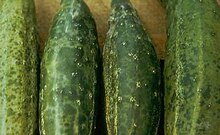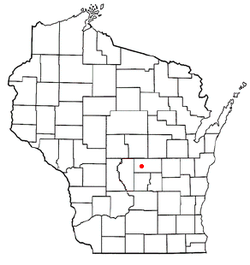HD 85622
HD 85622| 관측 데이터 에폭 J2000 이쿼녹스 J2000 | |
|---|---|
| 별자리 | 벨라 |
| 우측 상승 | 09h 51m 40.66782s[1] |
| 탈위임 | −46° 32′ 51.4329″[1] |
| 겉보기 크기(V) | 4.58[2] |
| 특성. | |
| 진화 단계 | 초거성의[3] |
| 스펙트럼형 | G5 Ib[3] 또는 G6 IIa[4] |
| B-V색지수 | 1.20[5] |
| 아스트로메트리 | |
| 방사 속도(Rv) | +7.8±3.2km[6]/s |
| 적정운동(μ) | RA: −24.784[1]mas/yr Dec.: +9.843[1]mas/yr |
| 시차(시차) | 4.323 ± 0.1445 마스[1] |
| 거리 | 750 ± 30 리 (231 ± 8 pc) |
| 절대치수(MV) | −2.96[2] |
| 궤도[3] | |
| 기간(P) | 329.266±0.085 d |
| 편심률(e) | 0(초) |
| 페리아스트론 에폭(T) | 2453860.281±0.074 HJD |
| 반암도(K1) (iii) | 13.021±0.012km/s |
| 세부 사항 | |
| 미사 | 6.2±0.5[7] M☉ |
| 루미도 | 1908.45[8] L☉ |
| 온도 | 4796[8] K |
| 회전 속도(v sin i) | 19.3±1.0km[5]/s |
| 나이 | 63.7±15.8[7] 마이어 |
| 기타 지정 | |
| 데이터베이스 참조 | |
| 심바드 | 자료 |
HD 85622는 벨라의 남쪽 별자리에 있는 이진 항성계통이다.육안으로는 4.58의 외관상으로 볼 수 있다.[2]HD 85622까지의 거리는 연간 시차 변화량 4.3 mas로 추정할 수 있으며,[1] 값은 750광년이다.그것은 지구로부터 +8 km/s의 태양 중심 방사상 속도로 더 멀리 이동하고 있다.[6]
이것은 원형 궤도와 329.3일의 기간을 가진 단일 줄의 분광형 이항이다.sin i 값은 0.39 AU이며 여기서 a는 반조르 축이고 i는 시선에 대한 궤도 기울기이다.[3]이 값은 실제 세미조르 축에서 하한을 제공한다.이 시스템은 밝기에 미세 변동을 나타내며 [3]겉보기 플럭스가 42.6×10−17 W/m인2 X선 방출의 원천이다.[10]
가시성 성분은 G5 Ib[3] 또는 G6 IIA의 별 분류를 가진 초거성 별이다.[4]약 6400만년[7] 된 것으로 예상 회전속도는 19km/s이다.[5]이 별은 태양의 6.2배에 달하는[7] 질량을 가지고 있으며 유효온도 4,796K로 광구에서 태양의[8] 1,908배의 광도를 방출하고 있다.[8]
참조
- ^ a b c d e f Brown, A. G. A.; et al. (Gaia collaboration) (August 2018). "Gaia Data Release 2: Summary of the contents and survey properties". Astronomy & Astrophysics. 616. A1. arXiv:1804.09365. Bibcode:2018A&A...616A...1G. doi:10.1051/0004-6361/201833051.이 소스에 대한 가이아 DR2 기록 VizieR.
- ^ a b c Anderson, E.; Francis, Ch. (2012), "XHIP: An extended hipparcos compilation", Astronomy Letters, 38 (5): 331, arXiv:1108.4971, Bibcode:2012AstL...38..331A, doi:10.1134/S1063773712050015, S2CID 119257644.
- ^ a b c d e f Hearnshaw, J. B.; Komonjinda, Siramas; Skuljan, J.; Kilmartin, P. M. (November 2012), "A study of non-Keplerian velocities in observations of spectroscopic binary stars", Monthly Notices of the Royal Astronomical Society, 427 (1): 298–310, arXiv:1211.5527, Bibcode:2012MNRAS.427..298H, doi:10.1111/j.1365-2966.2012.21802.x, S2CID 118368473
- ^ a b Keenan, Philip C.; McNeil, Raymond C. (1989), "The Perkins catalog of revised MK types for the cooler stars", Astrophysical Journal Supplement Series, 71: 245, Bibcode:1989ApJS...71..245K, doi:10.1086/191373
- ^ a b c De Medeiros, J. R.; Udry, S.; Burki, G.; Mayor, M. (2002), "A catalog of rotational and radial velocities for evolved stars. II. Ib supergiant stars", Astronomy and Astrophysics, 395: 97–98, Bibcode:2002A&A...395...97D, doi:10.1051/0004-6361:20021214.
- ^ a b de Bruijne, J. H. J.; Eilers, A.-C. (October 2012), "Radial velocities for the HIPPARCOS-Gaia Hundred-Thousand-Proper-Motion project", Astronomy & Astrophysics, 546: 14, arXiv:1208.3048, Bibcode:2012A&A...546A..61D, doi:10.1051/0004-6361/201219219, S2CID 59451347, A61.
- ^ a b c d Tetzlaff, N.; et al. (January 2011), "A catalogue of young runaway Hipparcos stars within 3 kpc from the Sun", Monthly Notices of the Royal Astronomical Society, 410 (1): 190–200, arXiv:1007.4883, Bibcode:2011MNRAS.410..190T, doi:10.1111/j.1365-2966.2010.17434.x, S2CID 118629873.
- ^ a b c d McDonald, I.; et al. (2012), "Fundamental parameters and infrared excesses of Hipparcos stars", Monthly Notices of the Royal Astronomical Society, 427 (1): 343–357, arXiv:1208.2037, Bibcode:2012MNRAS.427..343M, doi:10.1111/j.1365-2966.2012.21873.x, S2CID 118665352.
- ^ "HD 85622". SIMBAD. Centre de données astronomiques de Strasbourg. Retrieved 2018-08-08.
- ^ Hunsch, M.; et al. (January 1998), "The ROSAT all-sky survey catalogue of optically bright late-type giants and supergiants", Astronomy and Astrophysics Supplement, 127 (2): 251–255, Bibcode:1998A&AS..127..251H, doi:10.1051/aas:1998347.


